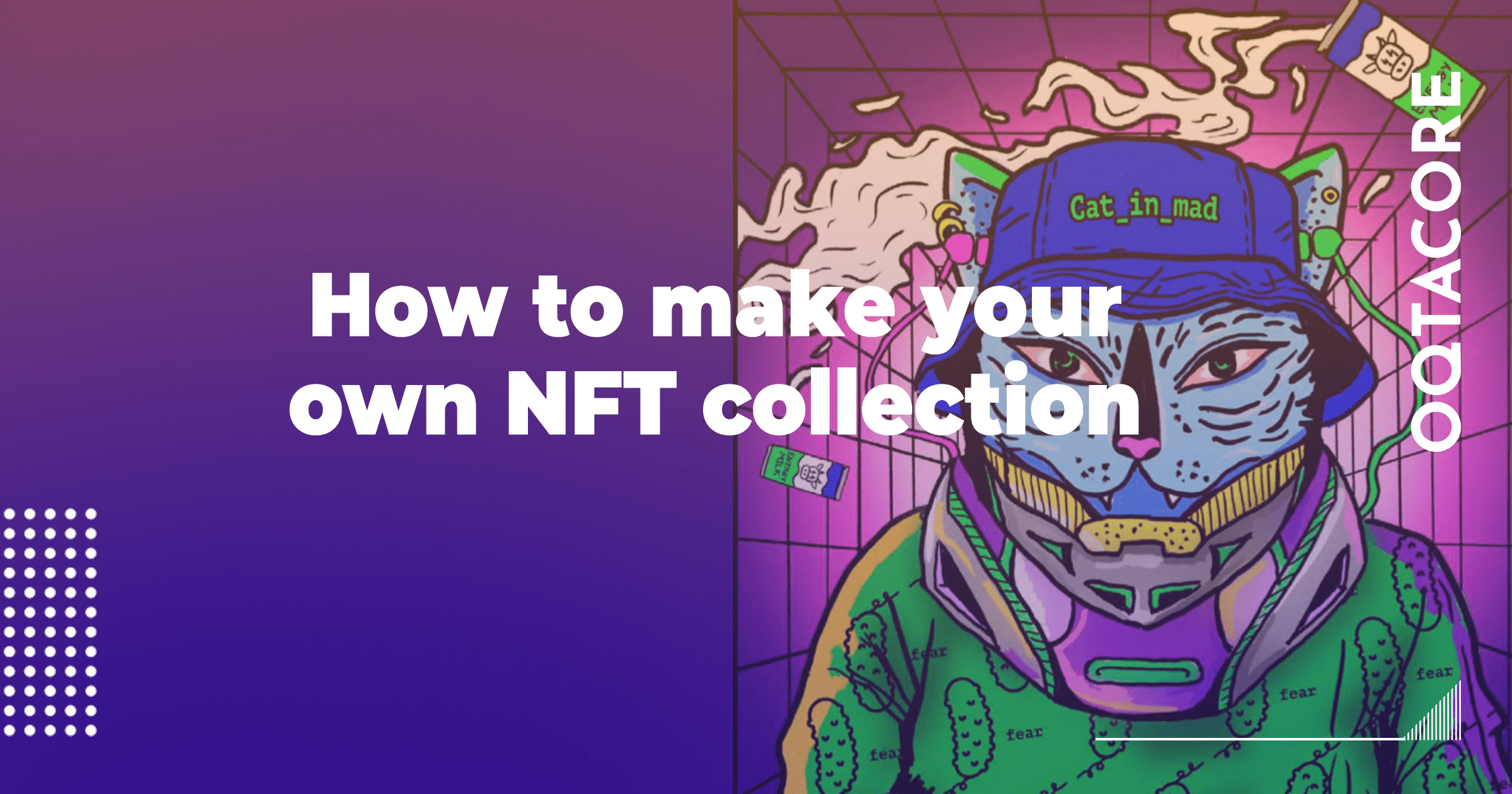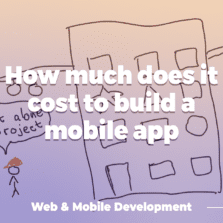

Have you ever thought about creating your own NFT collection from scratch?
Now is the perfect time to do so. NFT collectibles have revolutionized the world of art and entertainment. They have shaken up traditional ideas about how people invest in arts or sports. Blockchain-based NFT sales volume grew in 2021, a trend that looks set to continue in 2022.
Source: NonFungible.com
A collector recently paid $40,000 for an NFT token that secured him digital rights to a collection of physical items like a signed match jersey, a special commemorative cover and an autographed ticket to Sachin Tendulkar’s 200th Test and final match. Surprisingly, the physical memorabilia is still in the possession of the original owner, who can donate or sell it. NFT holders, in turn, can keep them or sell their tokens in their entirety or even split them up into many individual tokens using Fractionalized Non-Fungible Tokens (F-NFTs), and then sell them to multiple co-owners. In this regard, it’s no longer surprising that collectible NFTs remain the most popular niche of the NFT market.
Source: NonFungible.com
But the most popular collectibles are still a huge number of various projects of digital artists, with Bored Ape Yacht Club (BAYC) being the most significant in terms of sales ($2.1 billion at the time of this writing), followed by CryptoPunks ($1,96 billion) and Meebits ($338 million).
So, what does it take to build your own NFT collection?
- Come up with an idea and decide on the concept;
- Choose the blockchain in which to deploy your NFT;
- Select the protocols, standards and properties of your collection. This includes choosing a platform to host it;
- Assemble the right team of professionals. The team should include smart contract developers, frontend/backend developers, designers, marketers and security specialists;
- Identify resources for promotion. Without proper promotion and advertising, it’s almost impossible today to convey the value of a product, no matter how innovative and elegant it may seem;
- Find celebrities to advertise your collection. The popularity of individual collections may depend on brilliant collaborations with famous artists or showbiz stars, and also on dependable partners willing to vouch for your endeavors;
- Lay the groundwork for future scaling of the collection so that it would be adaptable and doesn’t lose relevance as NFT technology develops further.
Digital collectibles come in many variations, including trading cards (usually virtual representations of their physical underlying assets, most often sports-related), digital images, videos, virtual real estate, domain names, crypto stamps (digital philately items), and even wines! Decide for yourself what is closer to you, or what, in your opinion, is missing in the market, and start developing an NFT concept.
Deciding the concept for your NFT collection
All great things begin with great inspiration. Typical examples of outstanding collections include Mad Dog Jones’ automatically generated collection Replicator (sold for $4.1 million), Grimes’ work (more than $6 million sold in total), and other works by such great crypto artists as Beeple or Trevor Jones.


Fragments of work from last year’s Beeple collection posted on OpenSea
Each NFT set can have multiple copies, and the ultimate goal of the collector is to get a complete set. Curio Cards is another classic example of an NFT collection. Curio Cards consists of 30 distinct digital collectible cards featuring artwork by seven different artists. Between 111 and 2,000 copies of each card are currently in circulation. In October 2021, Curio Cards full set was sold for a massive 393 ETH (about $1.2 million) by the world’s largest auction house Christie’s.
An interesting note for NFT collectibles is that typos add value as an additional rarity factor. For example, at Christie’s Curio Cards auction, the number of one of the cards was 17b.
Opensea has a page devoted to NFT trading cards that also fall under the collectibles genre. Some of the NFT projects listed there include names like AllStarFreaks, BeezerBears and others. We recommend checking it out if you’re interested in this.
A lot of collections are generated automatically, combining artistic value with the skill of designing different generation algorithms, or algorithms for assigning rarity to individual works – and this is quite popular. Thus, during the concept phase, you will be required to do not only the artistic work but also come up with cool engineering solutions; after all, we’re talking about digital collections in blockchain!
Technical components of an NFT collection
At this stage, it’s necessary to understand the main technical issues involved in NFT development and promotion in the modern digital collection market.
Blockchain
Satoshi Nakamoto was the one who originally proposed the concept of blockchain as an open, distributed ledger that formed the basis for all subsequent inventions in the crypto industry. Unlike traditional databases, a blockchain does not hold the resulting values in a table, but holds a log of all operations to populate that table. The final table is assembled by each blockchain user on his or her own computer. For example, the Bitcoin network does not store users’ current balances. To find out, one has to go through the transaction history from the very beginning of Bitcoin’s history and check transactions of a given user, to learn their current balance.
An important detail is that each computer on the network holds a complete copy of the entire blockchain, and the blockchain variant that more than 51% of the computers adhere to is considered true. In other words, if someone owned more than 51% of the computers in the Bitcoin network, they could arbitrarily set the entire history of previous transactions (a 51% attack). But it is not economically feasible to do this.
The most common blockchain used in NFT projects today is Ethereum, which provides the most secure and tool-rich environment for writing and deploying smart contracts, which is technically what NFTs are.
However, due to its insane popularity, Ethereum has become quite expensive in terms of commission costs, and it’s congested (i.e. slow). There are other, more performant and cheaper platforms (but less popular, and therefore more susceptible to market manipulation), with their own specialized apps. Examples are Flow, EOS, Tezos, Tron, Wax, and Hyperledger.
Addresses and transactions
Blockchain addresses are a very important concept in blockchains. A blockchain address is similar to an email address. It is unique throughout the world, and any money sent to your blockchain address will definitely come to you. Just like emails, one person can have any number of blockchain addresses.
NFTs belong to a specific blockchain address and can only be sold by the person who owns that blockchain address (or by a custodian specified by the owner – NFT standard ERC721 has such a mechanic).
Smart contracts
Smart contracts are automated wallets on the blockchain network to which you can send a certain command, and you can pay for execution of this command with cryptocurrency. Smart contracts in blockchain can be, in a way, compared to chatbots in instant messengers. They are programs that you can communicate with and ask to perform an action. But while messenger chatbots are closed systems that can be disabled or changed by the author, you can always see the source code of a smart contract in the blockchain. Besides, once you create a smart contract, there is no way to alter it. That is, you know exactly what the smart contract will do, and you know that it will never change, so it is 100% trustworthy.
Standards
Ethereum has come up with a large number of standard implementations (ERC, Ethereum Request for Comments) for smart contracts. For example, there is the ERC20 standard for cryptocurrencies, and ERC721 and ERC1155 for NFT.
The ERC721 standard describes the concept of non-fungible tokens and defines developer arrangements with respect to implementing important mechanisms, such as ensuring transfer of ownership, assigning royalties to NFT token creators, appointing a custodian on behalf of the NFT owner, and a number of other functions. But ERC721 also lacks some handy things, such as the ability to send more than one NFT in a single transaction.
The ERC1155 standard, in particular, combines both ERC20 and ERC721. And in addition, it allows to send several NFTs in one single transaction, whereas ERC721 can send only one NFT per transaction. There are also other improvements in the ERC1155.
Multimedia
Since storing pictures and videos in the Ethereum blockchain is incredibly expensive (it’s like drawing a picture on hundred-dollar bills to justify its high value), multimedia is stored separately from the blockchain, on the cheapest possible medium (just like in the real world, the most expensive paintings are drawn on two-cent sheets of paper).
Often IPFS, a special blockchain for storage, is used, which in reality is an ordinary torrent network. The main known issue of torrents is that files get abandoned, and at some point, there will not be a single computer on the network storing the image/video you are looking for, and you will not be able to access the data, even if you own the NFT that you paid a million dollars for. A very frustrating situation…
For this reason, the servers of the companies that make NFTs are also used for storage – as long as the company is alive, its servers are alive, hence the multimedia. The company can also go bankrupt, but still this scheme is more predictable – in case of access problems it is clear who to go to.
Building your project team
What kind of team would be able to create a popular NFT collection that would sell successfully? You will need:
- Artists who will translate the idea of the collection into reality;
- Smart contract developers who will design appropriate smart contracts for the collection elements;
- Security specialists are also needed to audit and detect critical errors in smart contracts, the most vulnerable components of blockchain today;
- Frontend/backend developers and designers to create a website, the calling card of your project;
- Marketers and PR specialists who will convey the value of your collection to the customer;
Depending on the specification of the collection project or, for example, the jurisdictions (between which intellectual property rights are transferred, or the rights to physical counterparts of collection assets in some cases), a number of other necessary professionals may be required, including lawyers, financial analysts, DevOps specialists, etc
Promoting your NFT Collection
Take a look at arts industry. Artists traditionally have very few channels to showcase their work. So, the prices generated by the relatively low visibility of their artwork cannot reflect the true value of such work.
In the field of advertising, social media – especially Twitter and YouTube – drives the most traffic to NFT platforms today. Among messengers, Discord and Telegram stand out.
Source: https://www.theblkchain.com/2021/05/07/twitter-matters-for-nft-art/
Artists, for the most part, cannot receive royalties from future sales of their works. And in the NFT realm, contracts can be programmed such that the creator receives a predetermined royalty each time their digital artwork is sold in secondary markets. Mintbase and Mintable have even created intuitive tools for those with no programming skills.
Artists no longer have to transfer ownership and content to agents, to sell their work. This gives them the impetus to make more profits.
Partnerships and collaborations
Brilliant collaborations with showbiz stars or famous artists can be a source of additional interest to the audience, increasing the popularity and significantly expanding the collection’s market. Despite the fact that this approach looks appealing, and we are increasingly seeing examples of effective collaborations between major companies, the legal aspects of the NFT market are yet to be perfected.


Source: Sportskeeda.com: Adidas x Prada “Metaverse” drop
Many existing NFT platforms were originally designed to support works and collections created by a single person. In contemporary practice, this can be somewhat limiting. In a number of scenarios, legal issues of attribution and co-authorship (e.g., between an artist and a CGI animator, or between an artist and a smart contract designer) can turn out critical.
It’s not always clear whether the collaborative product is the artist’s personal creation; “works made for hire” should be treated thoughtfully, encouraging artists to consider whether their contributions are part of an employment or partnership arrangement. In this vein, common scenarios should be reflected via contracts and other legal agreements that might enshrine the artist as “employed” or as a full partner who is entitled to all subsequent royalties and retains copyrights.
Scalability assessment
The scalability prospects for NFT collection projects are twofold. The first aspect is horizontal scaling – can a product deployed on one blockchain effectively interact with other blockchains, can it be supported by other marketplaces. The second aspect is whether an NFT collection can live on after the initial sale, by receiving new items and updates for existing items.
NFT cross-chain compatibility
Existing NFT ecosystems are isolated from each other. Once users choose one type of product, they can only sell/buy/trade it within the same ecosystem/network. Interoperability and cross-chain interaction have always been a barrier to widespread adoption of DApps and they continue to be a crucial challenge till today.
Cross-chain communications can be realized with the help of external trusted parties, just like banks are connected by SWIFT. The decentralization property is thus inevitably lost to some extent, as this connecting third party becomes a crucial entity. But fortunately, most NFT-related projects use Ethereum as their underlying platform, so no third party is needed in 90% of scenarios.
Updated NFT collections
Blockchains update their protocols frequently through soft forks (minor modifications that are compatible with previous protocols) and hard forks (significant backwards-incompatible modifications).
NFT schemas are closely related to the underlying platforms and strictly aligned with their features. Although data is often stored separately from the token metadata (e.g., in the IPFS), the most important logic and tokenId are still stored in the main blockchain network. Proper system update with enhancements also remains one of the important challenges of the market today. And if you are aiming at creating an NFT collection, you should think in advance about all possible options on improving the interoperability of your collection.
Stay tuned
Non-Fungible Token (NFT) is an emerging technology that is rapidly gaining popularity in the crypto industry. Today’s NFT solutions remain very limited, awaiting more significant advances in critical blockchain infrastructure that could change the digital/virtual asset market in the future.
However, we’re witnessing quite successful and functional projects today (just look at the collectible clothes and avatars for VR from RTFKT studio). And there’s nothing stopping you from creating an attractive NFT collection, selling its individual items or elements, and even getting additional programmable royalties in secondary markets. But it’s important to keep in mind that the segment is still very, very young, and developers of original NFT smart contracts often use additional centralized support for their projects, where important features cannot be provided by common blockchain standards.
In any case, even if you don’t want to risk your project security by resorting to a trusted third party, you will need savvy specialists who can design high-capacity and high-performance smart contracts to support your NFT collection.
We hope this overview will help existing and nascent NFT collections gain a foothold in the marketplace, making things much easier for those new to this field.
And to keep up with the current progress, you can always contact our specialists. OQTACORE has a wide range of experts, we are competent professionals in blockchain projects, including in minting NFTs.






